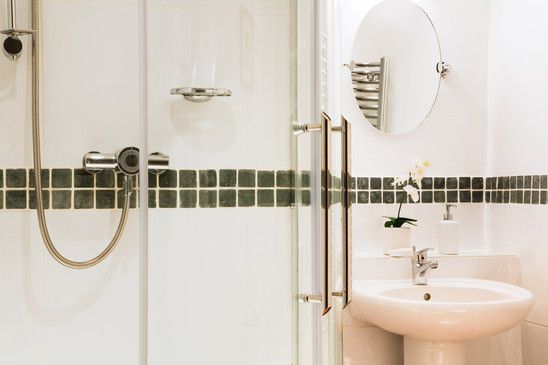Mold can spread like wildfire if left untreated. If you find evidence of mold in your home, you will want to take care of it as soon as possible. Mold is often found in poorly ventilated bathrooms, where moisture cannot dissipate. It will eventually be absorbed by the walls and reside there, creating the perfect environment for mold growth. Within a few weeks you may notice black spots on the walls or ceiling. This is evidence that mold has begun developing. There are a few easy steps and solutions to help you fight and conquer mold once it has been identified.
Cleaning mold on drywall and wood
There are many types of mold and mildew sprays on the market. If you decide to use a store-bought spray, make sure it cleans and protects. These products will help remove the surface mold and also distributes a mold preventative. These can come in one- or two-bottle applications.
One of the most common misconceptions regarding mold is that bleach will kill and remove it. Bleach may remove mold on non-porous surfaces, but is hopeless otherwise. It has been shown to actually aid mold growth because bleach solutions are mostly water. Thus, although it appears that the mold is removed entirely, the truth is that the roots still remain, hidden and ready to reappear at the first opportunity.
Unfortunately, the only way to truly eradicate mold once it sets into drywall and wood is to remove the infected portions. The longer you leave it, the more it will spread, so it is important to address moldy wall/wood issues as soon as possible. Complete removal is a viable (albeit potentially expensive) solution for homeowners and business owners, but what about renters and those who lease the premises and are not able to alter the structure of the building?
Renters are not entirely without remedy. For those of you who rent your residence or business space, alert your landlord of the mold problem immediately so he can make arrangements to have the problem rectified permanently. In the meantime, in order to minimize the mold you breathe in and to inhibit the mold from spreading, there are a few options to remove it from surfaces
In addition to commercial mold and mildew sprays, like Concrobium, you can make your own solution by mixing tri-sodium phosphate (TSP) and water. Transfer this cleaning solution to a spray bottle to temporarily clean up the problem. However, if the area you’re cleaning is painted, the TSP will dull the paint.
Once you spray the affected area you’re going to need a rough sponge to remove the surface mold. Make sure to scrub the entire area that looks infected. If you’re going to use a store-bought spray, follow the directions on the bottle, as a light wash may be required afterwards. With TSP, however, you will definitely need to give the wall a final rinse.
Cleaning a bathtub and tile
If you need to clean mold off of a porcelain tub or tile you have a few options. There are special mold sprays for tile and tub that won’t harm the porcelain or ceramic. You will still need to scrub the mold off the affected areas and since it’s on such a fine surface, multiple scrubbings will be required. Circular motions will leave the best results. Make sure to keep cleaning off the sponge in a bucket of hot water after mold has been removed
After you have removed all of the mold, make sure to put everything that has come into contact with it into a bag to be disposed of. If you get mold on your clothes you can wash them with ¾ to 1 cup of vinegar and detergent.
A simple way to help keep mold out of your bathroom is to install a good exhaust fan. These fans will help pull the moisture out of the bathroom so it doesn’t get stuck on the walls. Since dry areas are naturally mold resistant, look for a fan that is flow rated for the size of your bathroom or larger. A rule of thumb to go by is at least 1 cubic foot per minute (CFM) per square foot of room size. More airflow is better, but you will either trade higher noise levels or more cost to get it. Airflow is the critical concern. Noise, measured in sones, reflects both the fan size and its blade speed.
Following these steps and guidelines can help you to both remove and control the spread of mold in your home. It isn’t usually an enjoyable task and can require time and effort, but the peace of mind and security you’ll have knowing your house is mold-free will be well worth it in the end.
Chris Long is a Home Depot “on the floor” sales associate and a regular contributor to Home Depot’s blog. In addition to mold removal and other home cleanup, Chris writes on everything from light bulbs to home automation.


9 comments